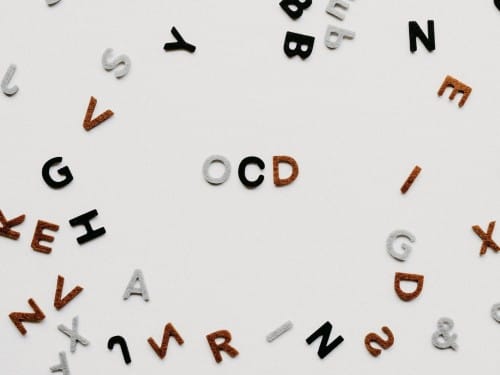OCD Facts and Treatment Plan

posted 7th May 2024

Understanding and Managing Obsessive-Compulsive Disorder (OCD)
Obsessive-Compulsive Disorder (OCD) is a common and chronic mental health disorder where a person experiences uncontrollable, recurring thoughts (obsessions) and behaviours (compulsions) that they feel the urge to repeat over and over. This condition not only affects individuals but also significantly impacts their families, influencing daily routines, relationships, and overall family dynamics.
OCD can manifest in numerous ways, but common obsessions include fears of germs or contamination, unwanted forbidden or taboo thoughts, or a need for symmetry and order. The compulsions might involve excessive cleaning, compulsive counting, or repeated checking of things such as locks or appliances.
For individuals, OCD can lead to a substantial decrease in quality of life, affecting educational pursuits, work productivity, and social interactions. The persistent interference of these thoughts and rituals can lead to distress, anxiety, and depression.
Families often face their own challenges when a member has OCD. The disorder can create a stressful home environment, where family members might feel compelled to accommodate the rituals or participate in them, which can be time-consuming and emotionally draining. Relationships can become strained, and the emotional burden can affect everyone involved.
Treatment Approaches
Cognitive Behavioural Therapy (CBT): CBT, specifically Exposure and Response Prevention (ERP), is considered the most effective treatment for OCD. It involves exposure to the source of anxiety and learning to refrain from the compulsive behaviour.
Medication: Antidepressants, particularly those that increase serotonin levels such as SSRIs (Selective Serotonin Reuptake Inhibitors), are commonly prescribed to help alleviate the symptoms of OCD.
Combination Therapy: Often, a combination of both CBT and medication is recommended for the best outcomes.
Support Groups and Education: Joining OCD support groups and seeking educational resources can also be beneficial. These avenues provide understanding, coping strategies, and a community of support not only for the individual but for family members as well.
Patient Profile:
Name: Jane
Age: 30
Symptoms: Severe contamination fears leading to excessive hand washing and avoidance of public places.
Treatment Goals:
Reduce compulsive hand washing by 50% within six months.
Decrease avoidance behaviors and improve social interactions within one year.
Treatment Steps:
Initial Assessment: Comprehensive evaluation by a psychiatrist to confirm the diagnosis and rule out other conditions.
Medication: Begin a low dose of an SSRI, adjusted as necessary based on response and side effects.
Cognitive Behavioural Therapy: Weekly sessions focused on ERP techniques, starting with less challenging fears and gradually working up to more difficult scenarios.
Family Therapy: Monthly sessions to educate the family on OCD, discuss how they can support Jane without enabling her behaviours, and address any interpersonal strains.
Self-Care and Routine: Encouragement of regular physical activity and a structured daily routine to help manage anxiety and promote overall well-being.
Review and Adjust: Regular review sessions every three months to assess progress and make adjustments to the treatment plan as necessary.
Determining when a heightened sensitivity to imperfections crosses over into the realm of OCD involves examining the intensity, frequency, and impact of the behaviors and thoughts associated with this sensitivity. Here are key indicators that suggest a heightened sensitivity to imperfections might be symptomatic of OCD:
1. Intrusive and Persistent Thoughts
A key sign of OCD is the presence of ongoing, intrusive thoughts that are not just passing worries but persistent and distressing. If a person can't stop thinking about imperfections, and these thoughts provoke significant anxiety or distress, it might indicate OCD.
2. Compulsions to Correct or Manage Imperfections
If the sensitivity leads to compulsive behaviours—actions that a person feels driven to perform repeatedly, like rearranging items until they feel "just right," cleaning excessively, or repeatedly checking work for tiny mistakes—this can be a sign of OCD. These behaviors are typically intended to prevent perceived negative outcomes or to reduce distress associated with the imperfections.
3. Excessive Amount of Time Spent
When a person spends an unreasonable amount of time (often hours per day) attending to these imperfections, beyond what would be considered normal or productive, it might be indicative of OCD. The key factor is not just the amount of time, but also the inability to control or reduce this time spent despite wanting to.
4. Significant Distress or Impairment
The preoccupation with imperfections causes significant emotional distress or anxiety. Moreover, it starts to impair daily functioning, affecting work, social interactions, and personal routines. This interference is a strong indicator of OCD.
5. Recognition of Excessiveness
People with OCD often recognise, at least to some extent, that their fears and behaviors are excessive or unreasonable. However, despite this recognition, they feel unable to control their actions without help.
6. Avoidance Behaviours
Avoiding situations where imperfections might be encountered or where their rituals cannot be carried out can also signal OCD. This avoidance can limit personal and professional opportunities and significantly impact quality of life.
It's important for individuals who recognise these patterns in themselves to seek a professional evaluation. Mental health professionals typically use diagnostic criteria, such as those outlined in the Diagnostic and Statistical Manual of Mental Disorders (DSM-5), to determine whether someone's symptoms meet the standards for OCD. This includes looking at the nature of the obsessions and compulsions, their impact on the individual's functioning, and their duration.
OCD is a challenging disorder, but with effective treatment, individuals can regain control over their symptoms and improve their quality of life. Family support is crucial, and with proper education and resources, families can learn how to best support their loved one while also taking care of their own emotional well-being. Treatment is not a one-size-fits-all approach and should be tailored to each individual's specific needs, ensuring the best possible outcomes for both the individual and their family.



